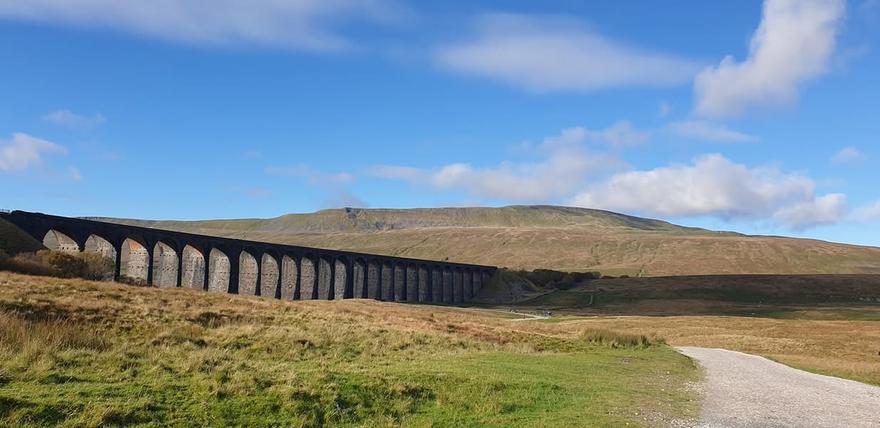
How well do you know Ribblesdale? It's packed with 'big names' of Yorkshire Dales attractions as well as some more hidden landscape features.
Many first-time visitors to the Yorkshire Dales come specially for the challenge of Yorkshire's Three Peaks - Whernside, Ingleborough and Pen-y-ghent - popular challenges to walkers, cyclists and fell-runners alike. At 2,415 ft, Whernside is the highest point in North Yorkshire. The long distance routes of Pennine Way, Pennine Bridleway and Dales High Way all run through Ribblesdale. Ingleton is a popular base, with a good selection of shops, and the waterfalls walk. If you're looking for a walk where you'll barely see a soul, try Long Preston, Feizor and Crummokdale.
One of Ribbledales's most iconic landmarks is Ribbleshead Viaduct, an amazing feat of Victorian engineering. Its name comes from its proximity to the river Ribble. The 24 arches span a 440 yard stretch across Batty Moss, and were built by a team of over 2,300 men.
The much-loved Settle-Carlisle Railway attracts many visitors who travel from around the world to enjoy the breath-taking journey on this famous route.
The river Ribble is a famous salmon river so if you're lucky in late October and November you might see the amazing display of Salmon leaping up Stainford Forth.
Another special gem is the Hoffman Kiln, a huge structure that many still manage to miss. Once you've discovered it, you'll be amazed! There are now plans to create trails around it and add better interpretation displays.
Many visitors will never see some of Ribblesdale's incredible sights - as they're hidden underground in an amazing network of cave systems. Some of these are accessible (with care - guides are recommended) and excavations have even found evidence of rhinos and elephants from over 130,000 years ago when the climate was much warmer. You can find out more at the panel by Victoria Cave or by visiting Ingleborough Cave. Gaping Gill, is one of the largest underground open chambers in the country and just one of the numerous potholes and cave systems to explore.
This area’s history is written in its landscape. You can find the remnants of walls dating from the pre-Roman era, old drovers’ lanes, dry-stone walls, sheep creeps, wash dubs, bee boles, packhorse bridges and lime kilns.
Photo: many thanks to Ste Moon
